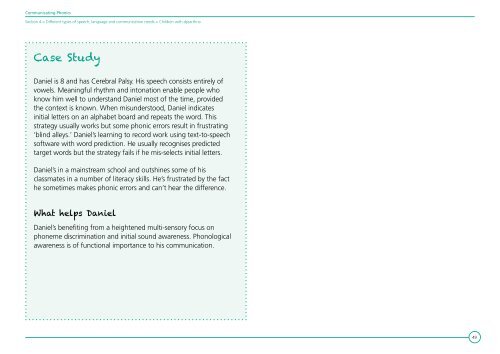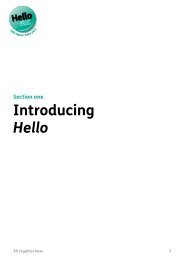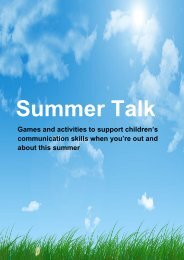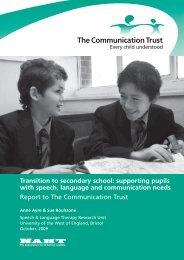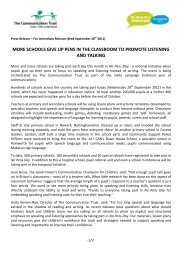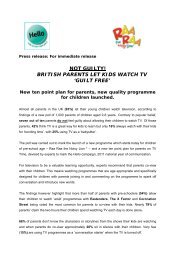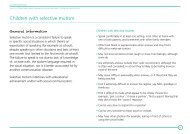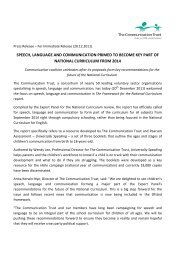Communicating Phonics - The Communication Trust
Communicating Phonics - The Communication Trust
Communicating Phonics - The Communication Trust
You also want an ePaper? Increase the reach of your titles
YUMPU automatically turns print PDFs into web optimized ePapers that Google loves.
<strong>Communicating</strong> <strong>Phonics</strong>Section 4 > Different types of speech, language and communication needs > Children with dysarthriaCase StudyDaniel is 8 and has Cerebral Palsy. His speech consists entirely ofvowels. Meaningful rhythm and intonation enable people whoknow him well to understand Daniel most of the time, providedthe context is known. When misunderstood, Daniel indicatesinitial letters on an alphabet board and repeats the word. Thisstrategy usually works but some phonic errors result in frustrating‘blind alleys.’ Daniel’s learning to record work using text-to-speechsoftware with word prediction. He usually recognises predictedtarget words but the strategy fails if he mis-selects initial letters.Daniel’s in a mainstream school and outshines some of hisclassmates in a number of literacy skills. He’s frustrated by the facthe sometimes makes phonic errors and can’t hear the difference.What helps DanielDaniel’s benefiting from a heightened multi-sensory focus onphoneme discrimination and initial sound awareness. Phonologicalawareness is of functional importance to his communication.49


